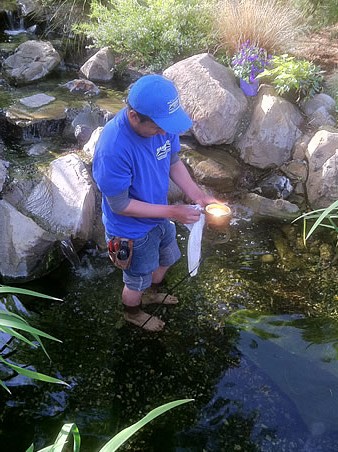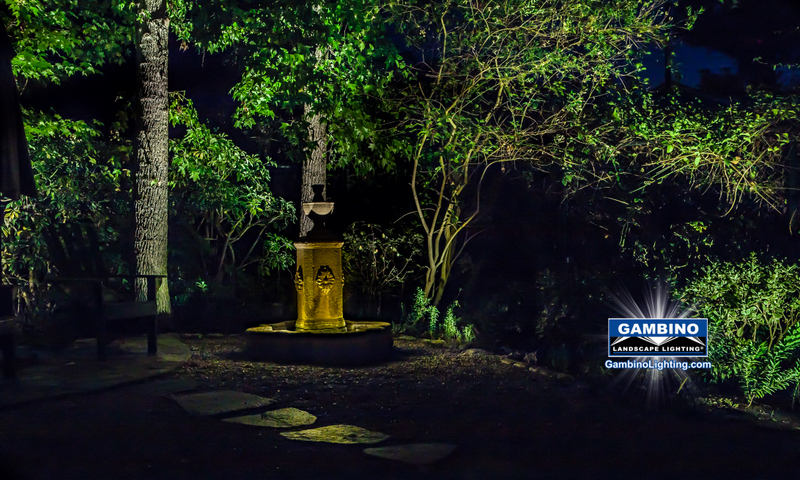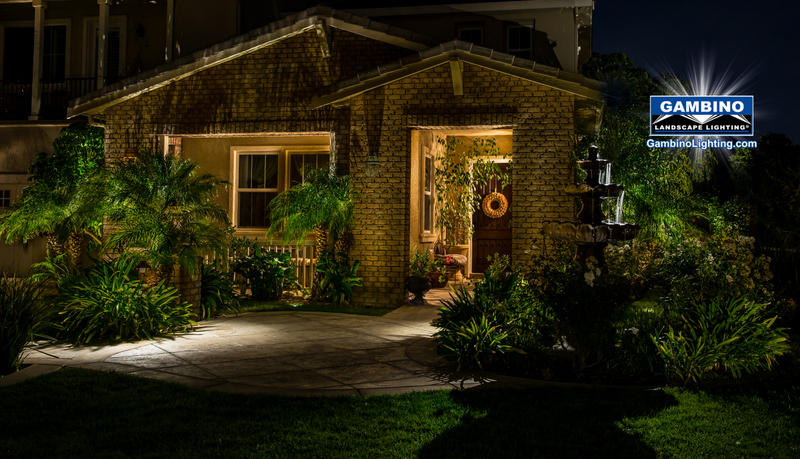13 May WHAT SHOULD A LED Landscape Lighting MAINTENANCE PLAN INCLUDE?
By Mike Gambino
Sometimes I am asked why is there a need to pay a professional to regularly maintain their LED landscape Lighting system. It seems that some think that once the system is installed that it will operate without care for many years to come and they only need to pay for the electricity that it operates on.
Well, that would be nice if it was true, but unfortunately that’s not the case.
Just like our cars and most every other mechanical device that needs attention on a regular basis for peak performance, so does your LED Landscape Lighting system. In this post, I will break this down, and hopefully explain in it a way that will make sense.
 Comprehensive Landscape lighting Maintenance
Comprehensive Landscape lighting Maintenance
Regular and routine maintenance of the landscape lighting system is best accomplished if performed by the original system design installer to assure that the system operates optimally. The maintenance schedule will ensure that the proper replacement components are used when required, and a plan to respond to unforeseen problems can keep the system working well and minimize downtime.
- Establish a periodic and routine maintenance schedule to inspect and report performance conditions of the landscape lighting system to the end‐user/owner/owner’s representative.
- Create and post at the controller a station/zone map for ease of system inspection and controller programming. In the absence of an as‐built or record drawing, include the location of key components such as controllers, main power breakers, GFCI outlets, remote control relays, low voltage transformers.
 Periodic Maintenance
Periodic Maintenance
- Review the system components periodically (i.e., annually or as determined by the design installer) to verify the system functionality.
- Inspect and verify that the control devices are working correctly and adjust and reprogram as required.
- Inspect and verify that the voltage and amperage meet system operational requirements for optimal system efficiency.
- Adjust fixtures for proper light output, efficiency, and operation as needed.
- Prune any plant materials that block light output or cross in front of fixture lenses
- Test system cable wiring for voltage, amperage, continuity and integrity, and document readings.
- Clean glass lenses thoroughly to prevent permanent staining and light blockage.
 Ongoing Maintenance
Ongoing Maintenance
Review the system components regularly to verify the efficient operation and uniform distribution of light
1) Examine and clean lenses as needed.
2) Inspect and verify proper operation of the controller. Confirm correct date/time input and functional backup battery where used.
3) Inspect and verify that lamps used in the lighting system are working properly.
4) Inspect and verify that lighting fixtures are operating at recommended specification and are properly adjusted and aimed properly at their intended subjects.
5) Ensure that plant material is not blocking or interfering with the operation or output of lighting fixtures. Move or relocate fixtures if it is not practical to prune or move offending plant materials.
6) Check all fixtures for water ingress and damage
7) Repair or replace broken pipe or malfunctioning components and restore the system to its optimal performance capabilities.
8) Test and adjust all repairs. Complete repairs in a timely manner to support the integrity of the lighting system. Ensure that replacement parts will perform the same as original equipment.
9) Clean and polish surface finish of fixtures
a.) Lamps used for system replacements of burnouts will maintain matched brightness levels and color temperature of the ones they are replacing.
b.) Fixture mounts should be checked for tightness and adjusted especially those that are attached to plants or trees.
c.) Document maintenance procedures and findings.
Additional Considerations
A thorough maintenance program will extend the useful life of the landscape lighting system. Good horticultural practices and irrigation management are needed to sustain the host landscaping. Changes and modifications to the landscape lighting system will be necessary as the landscape matures.
 This landscape lighting blog is published by Mike Gambino of Gambino landscape lighting inc. all rights reserved. Mike is a professional landscape lighting system designer/ builder and has been designing, installing and maintaining landscape lighting systems for more than 20 years. Mike resides in the Los Angeles area with his wife and 2 sons. To visit his website go to www.Gambinolighting.com . To inquire about hiring Mike please click here .
This landscape lighting blog is published by Mike Gambino of Gambino landscape lighting inc. all rights reserved. Mike is a professional landscape lighting system designer/ builder and has been designing, installing and maintaining landscape lighting systems for more than 20 years. Mike resides in the Los Angeles area with his wife and 2 sons. To visit his website go to www.Gambinolighting.com . To inquire about hiring Mike please click here .
Blog articles may be published with permission on other websites without editing or removing links.



No Comments